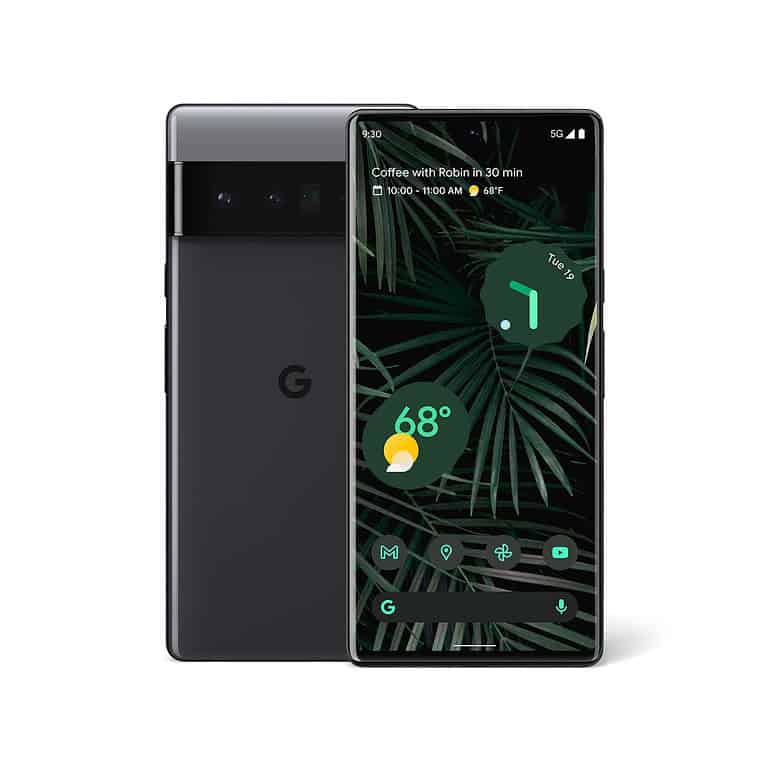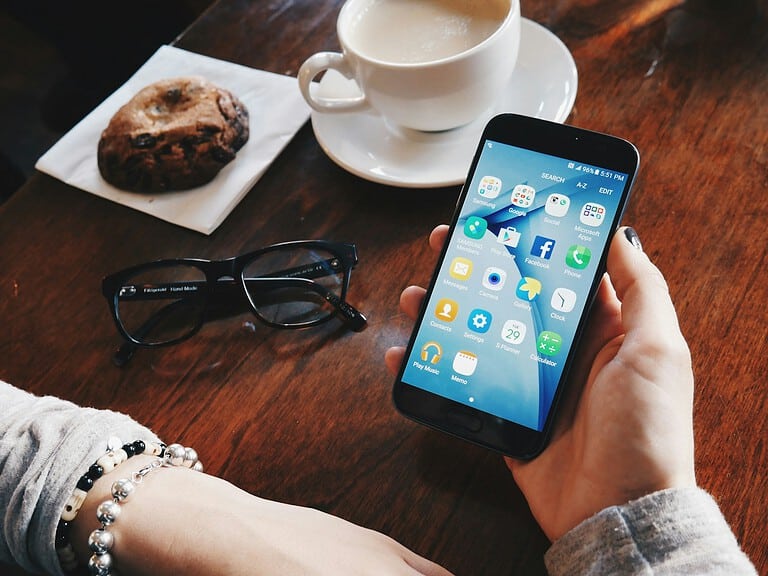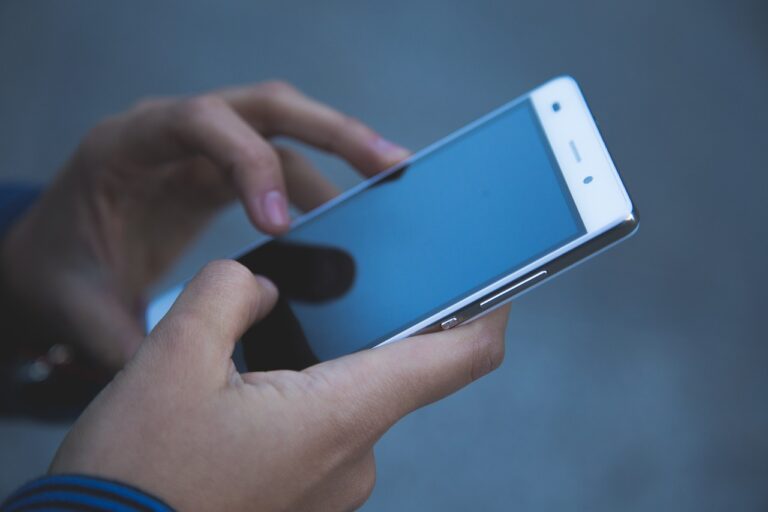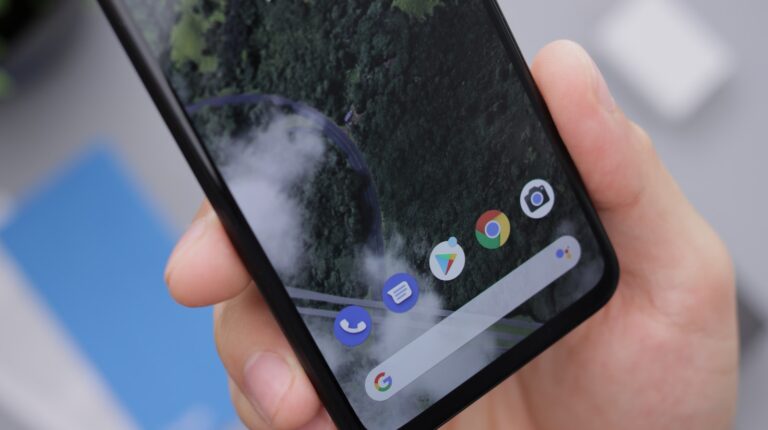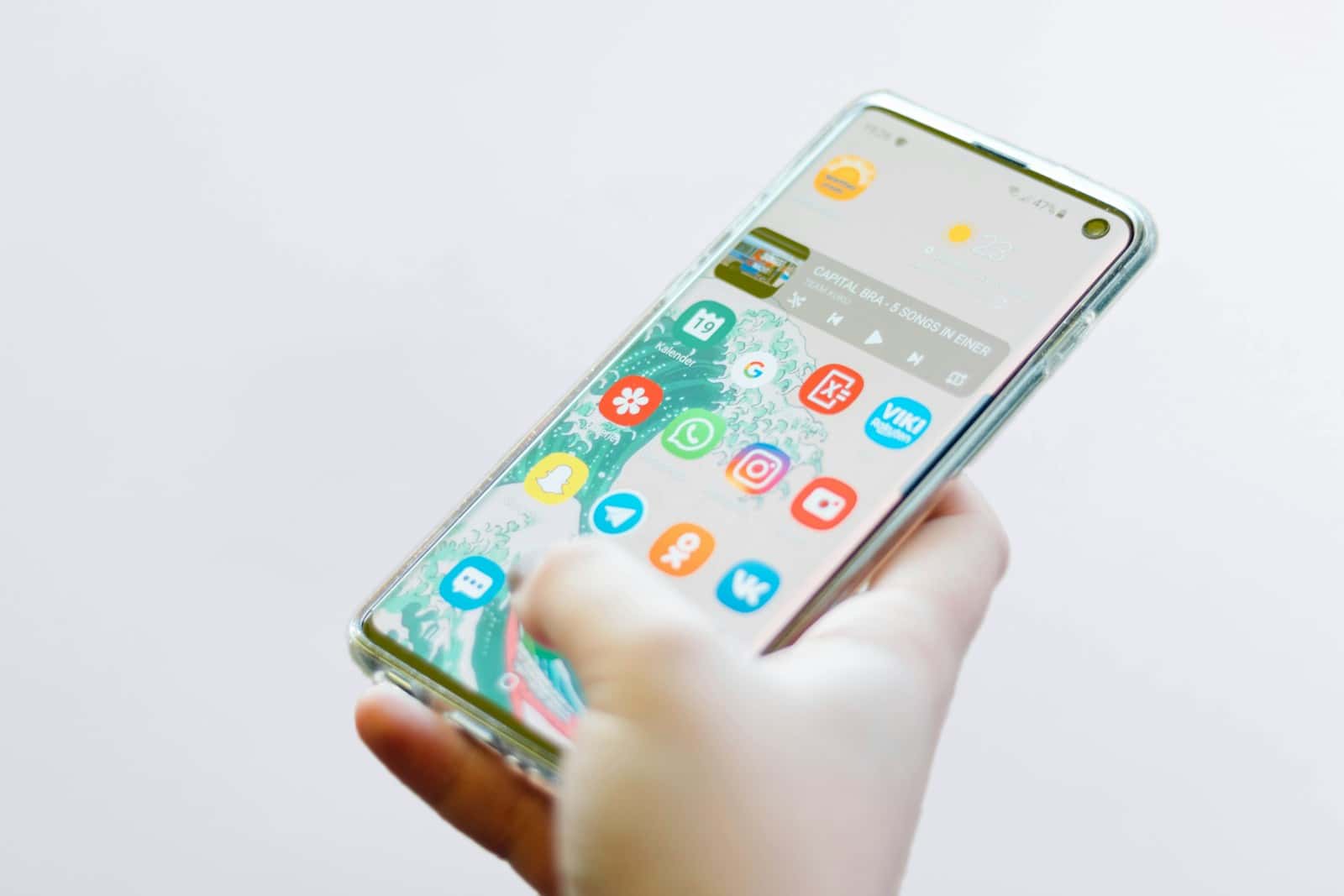
Taking screenshots on your Samsung Galaxy phone or tablet is easier than you might think. Whether you want to capture a funny text conversation, save an important email, or grab a receipt from an online purchase, Samsung offers several ways to snap that screen. You can take a basic screenshot on most Samsung Galaxy devices by simply pressing the power button and volume down button at the same time.
Samsung has added even more screenshot capabilities beyond the basic method. Some Galaxy phones allow you to capture the screen using a palm swipe gesture, where you simply swipe the edge of your hand across the screen from left to right or right to left. For Galaxy devices with an S Pen, you can use the Screen Write feature to take screenshots and immediately add notes.
Different Samsung models may have slightly different screenshot methods, so don’t worry if the first technique you try doesn’t work. The Smart capture menu that appears after taking a screenshot also lets you access additional features like Scroll capture, which is perfect for capturing long web pages or conversations that don’t fit on a single screen.
Screenshot on a Samsung Galaxy Phone
Taking a screenshot on a Samsung Galaxy phone is simple and can be done in several ways depending on your preference and device model. Here’s a quick guide:
1. Using Hardware Buttons (Most Common Method)
- Press the Power button and the Volume Down button simultaneously.
- Hold them for about a second until you see a flash or hear a shutter sound.
- The screenshot will be saved to your Gallery or Photos app.
2. Palm Swipe to Capture
- Enable this feature in Settings > Advanced Features > Motions and Gestures > Palm swipe to capture.
- Swipe the edge of your hand horizontally across the screen.
- The phone will capture the screenshot instantly.
3. Using the Assistant Menu
- Enable the Assistant Menu in Settings > Accessibility > Interaction and Dexterity > Assistant Menu.
- Tap the floating Assistant Menu icon on the screen.
- Select Screenshot from the menu to capture the screen.
4. Using the S Pen (For Galaxy Note and S Pen compatible devices)
- Remove the S Pen to open the Air Command menu.
- Tap Screen Write to capture a screenshot and immediately start editing it.
5. Taking Scrolling Screenshots (Capture long pages)
- After taking a screenshot using any method, tap the Scroll capture button that appears at the bottom of the screen.
- The phone will automatically scroll and capture more of the page.
- Tap the button repeatedly or stop when you’ve captured everything you need.
Additional Tips
- You can take screenshots even while watching videos or playing games in full-screen mode.
- Screenshots are saved in the Screenshots folder in your Gallery app.
This covers the most popular and effective ways to capture screenshots on Samsung Galaxy devices. For more detailed guides and images, you can check Samsung’s official support page on How to take a screenshot on my Samsung Galaxy device.
Key Takeaways
- Press the power button and volume down button simultaneously for a basic screenshot on Samsung Galaxy devices.
- Use palm swipe gesture or S Pen features as convenient alternatives for capturing your screen.
- Access the Smart capture menu after taking a screenshot to use advanced features like Scroll capture and immediate editing.
Understanding Screenshots on Samsung Galaxy Devices
Screenshots are a crucial feature on Samsung Galaxy phones that let users capture what’s on their screen instantly. They’re helpful for saving information, sharing content, or troubleshooting problems.
What Is a Screenshot?
A screenshot is a digital image that shows exactly what appears on your Samsung Galaxy’s display at a specific moment. Think of it as taking a photo of your screen.
On Samsung devices, these captured images are automatically saved to your Gallery app, usually in a dedicated “Screenshots” folder. This makes them easy to find later.
Screenshots preserve everything visible on your screen—including apps, messages, websites, and games. They can capture any content displayed on your Samsung Galaxy, from social media posts to maps or even video frames.
Modern Samsung Galaxy phones offer multiple ways to capture screenshots, making the process quick and convenient for all users regardless of their technical abilities.
Benefits of Taking Screenshots
Screenshots on your Samsung Galaxy device serve many practical purposes in daily smartphone use:
Documentation and reference: Screenshots help save important information like:
- Confirmation numbers
- Directions
- Recipes
- Error messages for troubleshooting
Sharing made simple: Screenshots make sharing content effortless. Instead of explaining what you see, you can capture and send the exact visual to friends or family.
Problem-solving tool: When facing technical issues, support teams often request screenshots to diagnose problems more effectively.
Screenshots are also valuable for saving social media content that might disappear later. Many Samsung Galaxy users take screenshots of interesting articles to read offline when they have more time.
The ease of taking screenshots with button combinations or palm swipes makes this feature one of the most frequently used on Samsung devices.
Preparing Your Samsung Galaxy for Screenshots
Before taking screenshots on your Samsung Galaxy device, you need to set up a few options. These settings make it easier to capture your screen without pressing multiple buttons at once.
Enabling Palm Swipe to Capture
Samsung Galaxy devices offer a convenient feature called Palm Swipe to Capture. This method lets users take screenshots by simply swiping the edge of their hand across the screen.
To enable this feature:
- Open the Settings app on your Samsung device
- Scroll down and tap on Advanced features
- Look for Motions and gestures
- Toggle on the Palm swipe to capture option
Once enabled, users can swipe the edge of their hand from right to left or left to right across the screen. The phone will vibrate slightly and capture the screenshot.
This method works well for one-handed operation. It’s especially useful when physical buttons are difficult to press simultaneously.
Adjusting Motions and Gestures Settings
The Motions and Gestures menu contains additional settings that can enhance the screenshot experience on Samsung Galaxy devices.
To access these settings:
- Open Settings on your Samsung Galaxy
- Navigate to Advanced features
- Select Motions and gestures
From this menu, users can customize various gesture controls. Some Samsung models also offer screenshot options through Edge panels. To set this up:
- Enable Edge panels in Settings
- Add the Smart select panel
- Open the Edge panel when needed
The Smart select feature allows capturing specific portions of the screen. Users can choose between rectangular, oval, or even animated GIF captures.
These settings make screenshots more accessible and versatile on Samsung Galaxy devices.
Basic Techniques to Take a Screenshot
Samsung Galaxy devices offer simple ways to capture what’s on your screen. These methods work across most Samsung models and don’t require additional apps.
Using Button Combinations
The most common way to take a screenshot on a Samsung Galaxy is using the button combination method. Press and hold the power button and volume down button simultaneously for about a second. You’ll hear a shutter sound and see a brief animation when successful.
For older Samsung models (before Galaxy S8), you might need to press the power button and home button together instead.
If you’re having trouble with timing, try pressing the volume down button slightly before the power button. Hold both for about one second and then release.
After taking the screenshot, a toolbar appears at the bottom of the screen with options to:
- Edit the screenshot
- Share it immediately
- Capture more of the page (scrolling screenshot)
Palm Swipe Method
Samsung offers a unique palm swipe feature that provides a touch-based alternative. To use this method, place the side of your palm (like a karate chop position) on the screen and swipe from right to left or left to right.
This feature must be enabled first. To turn it on:
- Go to Settings
- Select Advanced features
- Tap Motions and gestures
- Toggle on Palm swipe to capture
The palm swipe works best when done with a light, quick motion across the screen. This method is particularly helpful when pressing buttons is difficult or inconvenient.
Some users find the palm swipe more natural after practice, while others prefer the reliability of the button combination method.
Advanced Screenshot Features
Samsung Galaxy devices offer several powerful screenshot capabilities beyond the basic methods. These features help users capture exactly what they need, whether it’s a long webpage, hands-free capture, or precision work with the S Pen.
Scroll Capture for Long Screenshots
The Scroll Capture feature allows users to take screenshots of content that doesn’t fit on a single screen. This is particularly useful for capturing entire webpages, long conversations, or recipes.
To use this feature, users should first take a regular screenshot using the power and volume down buttons. When the screenshot toolbar appears, they can tap the “Scroll Capture” icon (which looks like a downward-pointing arrow).
The screen will automatically scroll down, capturing more content. Users can continue tapping this button to capture additional scrolls or stop at any point by tapping elsewhere on the screen.
Samsung has improved this feature over various device generations, making it smoother and more reliable on newer Galaxy models.
Using Bixby Voice to Take a Screenshot
For hands-free operation, Bixby Voice commands offer a convenient way to capture screenshots without touching the device.
To use this method:
- Make sure Bixby is set up on the device
- Say “Hi Bixby” to activate the assistant
- Command “Take a screenshot” clearly
This approach is ideal for situations where both hands are occupied or when trying to capture time-sensitive content without fumbling for button combinations.
Bixby can also be instructed to share the screenshot immediately after capturing it. Users simply need to add “and share it” to their voice command.
Taking Screenshots With the S Pen
Galaxy Note and S Ultra series devices with the S Pen offer additional screenshot capabilities that provide greater precision and flexibility.
The Screen Write feature activates automatically when users remove the S Pen and select Screen Write from the Air Command menu. This immediately captures the screen and opens the image for annotation.
For more selective captures, the S Pen’s Smart Select feature allows users to:
- Draw rectangles or ovals around specific content
- Extract text from images
- Create animated GIFs from videos
- Pin screenshots to the screen for reference
The S Pen provides the most versatile screenshot experience in the Samsung ecosystem, particularly for professionals who need to highlight specific information or create instructional content.
Editing and Sharing Your Samsung Screenshots
After capturing a screenshot on your Samsung Galaxy device, you can easily edit and share it with others. Samsung offers several built-in tools that make organizing, customizing, and sharing your screenshots simple and efficient.
Basic Editing Tools
When you take a screenshot on your Samsung device, a toolbar appears at the bottom of the screen with several editing options. Tap the pencil or edit icon to access the full editing suite.
The editing toolkit includes:
- Crop tool: Resize your screenshot to focus on important information
- Drawing tools: Highlight areas with different pen types and colors
- Text tool: Add explanatory text directly on the screenshot
- Eraser: Remove any markings you’ve added
You can also use filters to change the overall look of your screenshot or add stickers for a personalized touch. The undo and redo buttons help you correct mistakes without starting over.
Samsung’s screenshot editing features are designed to be intuitive, allowing you to make quick adjustments before saving or sharing.
Accessing Screenshots in the Gallery App
All screenshots are automatically saved to your device’s Gallery app in a dedicated Screenshots folder. This makes them easy to find when you need them later.
To access your screenshots:
- Open the Gallery app on your Samsung device
- Tap the “Albums” tab at the bottom
- Look for the “Screenshots” album
You can also find screenshots in the Photos app by tapping “Collections” at the bottom, then “On this device” and selecting “Screenshots“.
The Gallery app allows you to organize screenshots into albums, favorite important ones, or delete those you no longer need. Samsung’s intelligent categorization helps keep your media organized automatically.
Sharing Screenshots on Social Media
Sharing your screenshots from a Samsung Galaxy device is straightforward and can be done directly from the Gallery app or immediately after taking the screenshot.
When viewing a screenshot, tap the share icon (typically shaped like a paper airplane or three connected dots) to see all available sharing options. Samsung provides quick access to:
- Popular social media platforms (Instagram, Facebook, Twitter)
- Messaging apps (WhatsApp, Messenger, Telegram)
- Email and cloud storage services
- Nearby sharing for direct device-to-device transfers
You can share multiple screenshots at once by selecting several images in the Gallery before tapping the share button. This is useful when sending a series of instructions or a conversation.
For quick sharing, use the toolbar that appears right after taking a screenshot—this saves time by eliminating the need to open the Gallery app first.
Troubleshooting Common Screenshot Issues
Screenshots on Samsung Galaxy devices sometimes don’t work as expected due to software limitations, button issues, or incorrect settings. Understanding common errors can help resolve these problems quickly.
Resolving ‘Unable to Capture Screenshot’ Error
When your Samsung device displays an unable to capture screenshot message, several factors might be causing this issue. One common cause is insufficient internal memory. Check your device’s storage and delete unnecessary files to free up space.
Another potential issue involves the physical buttons. The volume down and power buttons need to be pressed simultaneously and correctly. If one button is malfunctioning or if they aren’t pressed evenly, the screenshot function won’t work.
Some apps with sensitive content may block screenshots for security reasons. In this case, try using screen recording instead or take screenshots of the information in smaller segments when allowed.
What to Do When Palm Swipe Doesn’t Work
Samsung’s palm swipe gesture allows users to capture screenshots by swiping the edge of their hand across the screen. If this feature isn’t working, first ensure it’s activated in the settings.
To enable palm swipe:
- Go to Settings
- Select Advanced features
- Tap Motions and gestures
- Toggle on Palm swipe to capture
If the feature is already enabled but still not working, try cleaning your screen. Dirt or screen protectors can sometimes interfere with touch sensitivity.
As an alternative method, users can add the screenshot button to their Quick Panel. This provides an easy tap option when gestures and button combinations aren’t working reliably.
Alternative Screenshot Methods
Samsung Galaxy devices offer several easy ways to capture your screen beyond the standard button combinations. These options can be especially useful when physical buttons are hard to press or when you need to take screenshots quickly.
Using Google Assistant for Screenshots
Google Assistant offers a convenient hands-free option for taking screenshots on Samsung Galaxy devices, including the S21. To use this method:
- Set up Google Assistant if you haven’t already
- Activate Google Assistant by saying “Hey Google” or by pressing and holding the home button
- Say “take a screenshot” clearly
The phone will immediately capture what’s on your screen. This method is particularly helpful when you can’t use your hands to press buttons. The screenshots taken with Google Assistant are automatically saved to your gallery.
Many users find this helpful when they need to capture something quickly without navigating menus. Google Assistant can also share the screenshot immediately after capturing it if needed.
Leveraging Edge Panel Features
The Edge Panel on Samsung Galaxy devices provides quick access to screenshot tools. To set up and use this feature:
- Go to Settings > Display > Edge Screen > Edge Panels
- Enable Edge Panels and select “Smart select” from the panels
- Open the Edge Panel by swiping from the edge of the screen
- Choose the screenshot shape you want (rectangle, oval, or animation)
The Smart select tool allows users to capture specific portions of the screen. This is more precise than taking a full screenshot and cropping later.
On the Galaxy S21, users can also use the “Pin to screen” option to keep important information visible while using other apps. The Edge Panel makes taking screenshots faster and more efficient for regular users.
Utilizing Quick Settings for Screen Capture
Samsung has integrated screenshot functionality directly into the Quick Settings panel on Galaxy devices. To access this feature:
- Swipe down twice from the top of your screen to fully expand Quick Settings
- Look for the “Screenshot” button (you may need to swipe left to find it)
- If it’s not there, tap the pencil icon or “+” to customize and add it
Tapping this button instantly captures your screen. The Quick Settings method works on all Android-based Samsung devices including the S21.
For frequent screenshot users, this option can be positioned prominently in the Quick Settings panel for easy access. Samsung also allows users to use palm swipe gestures that can be enabled in Settings under Advanced Features.
Related Multimedia Functions
Beyond taking screenshots, Samsung Galaxy devices offer powerful screen recording features that let users capture dynamic content. These tools are perfect for creating tutorials, saving gameplay, or sharing app demonstrations.
Recording Your Screen on Samsung Galaxy
Samsung Galaxy phones make screen recording simple. Users can start by pulling down the notification panel twice to access the Quick Settings menu, then tapping the Screen Recorder icon. If the icon isn’t visible, they may need to swipe left to find it or edit the panel to add this function.
Before recording begins, users can choose audio settings:
- No sound: Records video only
- Media sounds: Captures app sounds but no voice
- Media sounds and mic: Records both device audio and voice narration
The device will display a countdown before recording starts. A floating control bar appears during recording with options to:
- Pause/resume recording
- Add annotations using the pen tool
- Include a selfie video overlay
Understanding Screen Recording Options
Samsung provides several customization options for screen recording. Users can access these by going to Settings > Advanced Features > Screenshots and screen recorder > Screen recorder settings.
Key options include:
- Video quality: Choose between 1080p, 720p, or 480p resolution
- Selfie video size: Adjust the size of the front camera overlay
- Show taps and touches: Highlights screen interactions
- Auto save location: Select where recordings are stored
The maximum recording time depends on device storage. Most recordings automatically stop after 3 hours, though this limit may vary by model.
To quickly access the screen recorder from anywhere, users can add a toggle to their Control Center. This feature integrates well with other Samsung multimedia tools, creating a comprehensive system for capturing and sharing content.
Expert Tips for Samsung Galaxy Users
Taking screenshots on Samsung Galaxy devices is easy once you know the right techniques. The most common method is pressing the power and volume down buttons simultaneously.
For those who find button combinations difficult, Samsung offers the palm swipe feature. Users simply swipe the edge of their hand across the screen to capture what’s displayed.
Voice Command Options:
- Ask Bixby: “Take a screenshot”
- Google Assistant: “Take a screenshot”
The S24 and newer Samsung devices offer advanced screenshot options. Users can capture scrolling screenshots for long webpages or documents by tapping the scroll capture option that appears after taking an initial screenshot.
For frequent screenshot takers, the Edge Panel feature provides quick access. Enable it in Settings, then add the screenshot action to your panel for one-tap captures.
After taking a screenshot, Samsung devices display editing tools. These allow immediate cropping, drawing, or sharing without needing to open the Gallery app first.
Troubleshooting Tips:
- If screenshots aren’t working, restart the device
- Check for system updates that might resolve screenshot issues
- Ensure storage has sufficient space
For Samsung Galaxy tablets, the methods remain similar to phones, making it consistent across the Android ecosystem.
Frequently Asked Questions
Taking screenshots on Samsung Galaxy devices can be done in several ways. Users often have questions about the specific methods and troubleshooting issues that might arise.
What are the different methods to capture a screenshot on a Samsung Galaxy device?
Samsung Galaxy devices offer multiple methods to take screenshots. The most common way is to press the power key and volume down key simultaneously until the screen flashes.
Another popular option is the palm swipe gesture. Users can simply swipe the edge of their hand across the screen from right to left or left to right.
Voice commands are also available for Samsung Galaxy users. By saying “Hey Bixby, take a screenshot” or using Google Assistant with “OK Google, take a screenshot,” users can capture their screens hands-free.
How can I enable and use the palm swipe feature to take a screenshot on a Samsung Galaxy smartphone?
To enable palm swipe, users should go to Settings, then Advanced Features, and look for Motions and Gestures. Under this menu, they can toggle on the “Palm swipe to capture” option.
Once enabled, users can simply place the side of their hand on the edge of the screen and swipe across the display. The screen will flash to indicate that a screenshot has been captured.
This method is particularly useful when taking a Samsung screenshot without button combinations.
Where can I find the screenshot settings on my Samsung Galaxy?
Screenshot settings can be found in the Settings app. Users should navigate to Advanced Features, then Screenshots and screen recorder.
In this section, users can customize various screenshot options including the toolbar, removing status and navigation bars, and auto-delete options.
For older Samsung Galaxy models, screenshot settings might be located under Display or Motions and Gestures depending on the device’s UI version.
What should I do if I’m unable to take a screenshot on my Samsung Galaxy?
If screenshots aren’t working, users should first restart their device to resolve temporary software glitches. This simple step often fixes most screenshot issues.
Checking for system updates is also recommended, as outdated software can sometimes cause screenshot functionality problems. Users should go to Settings > Software update to check.
If problems persist, users can check if their device’s buttons are working properly or try alternative screenshot methods like palm swipe or voice commands.
How can I take a screenshot on a Samsung Galaxy if the power button is not functioning?
If the power button is broken, the palm swipe feature is an excellent alternative. Users simply need to enable this feature in Settings and swipe the edge of their hand across the screen.
Voice assistants like Bixby or Google Assistant can also capture screenshots without using any buttons. Just say the voice command “take a screenshot” to either assistant.
Another option is to use the Edge panel feature, which provides a customizable menu that can include a screenshot option accessible from any screen.
Is there a way to take a screenshot on a Samsung Galaxy without using any buttons?
Yes, Samsung offers several button-free screenshot methods. The palm swipe gesture allows users to capture the screen by swiping the edge of their hand across the display.
Voice commands through Bixby or Google Assistant enable hands-free screenshots by simply saying “take a screenshot” to the active assistant.
The Edge panel feature provides a customizable menu that can be accessed by swiping from the edge of the screen, allowing users to add a screenshot shortcut for quick access.

